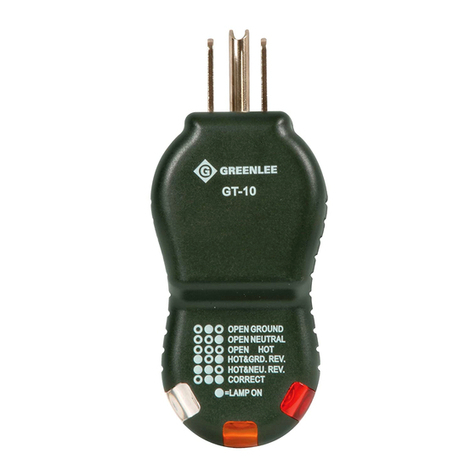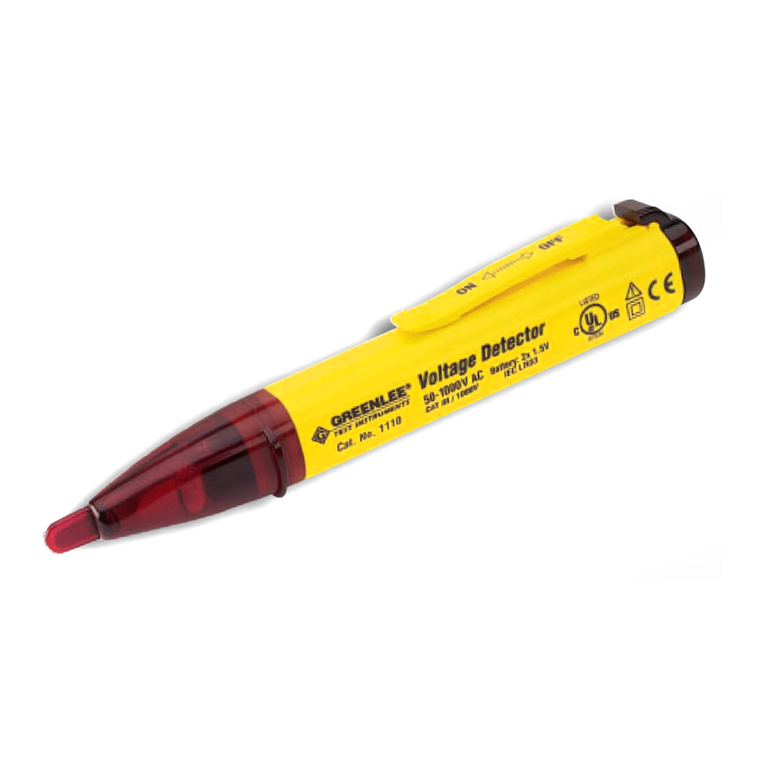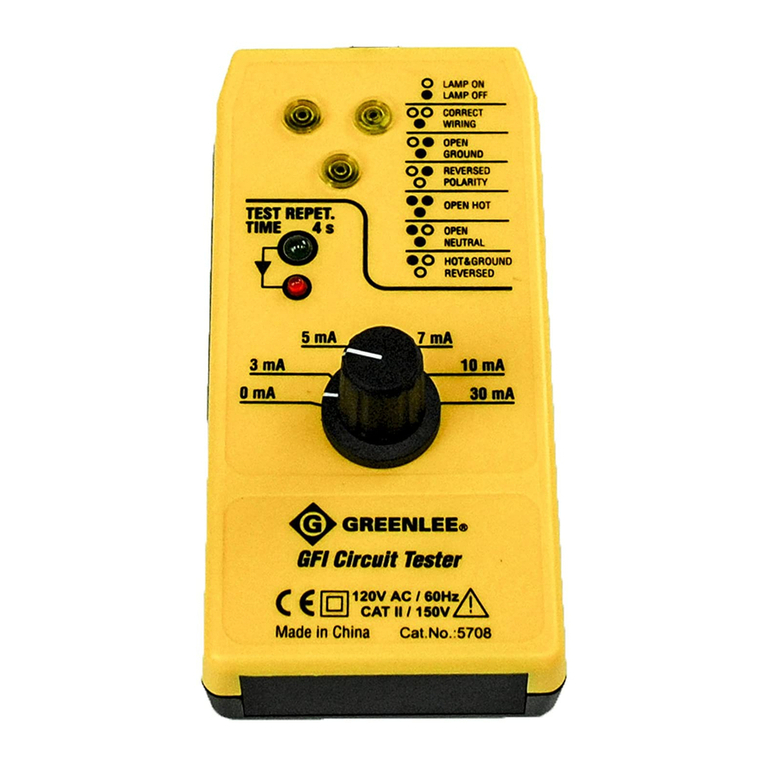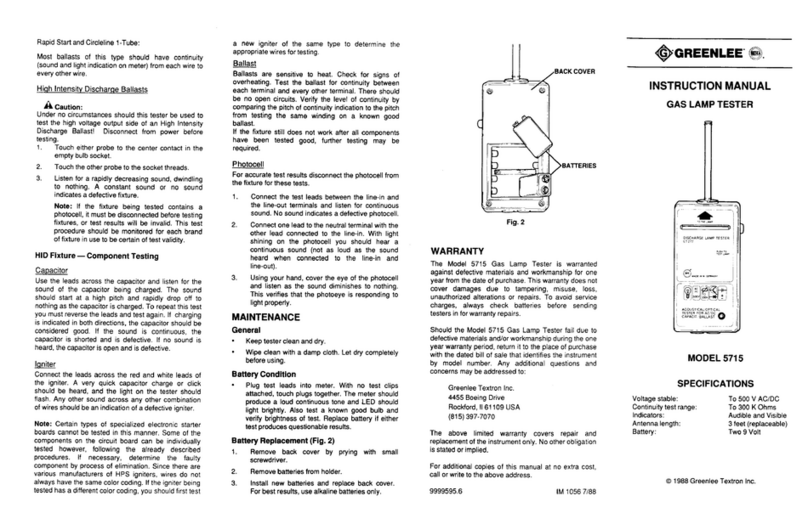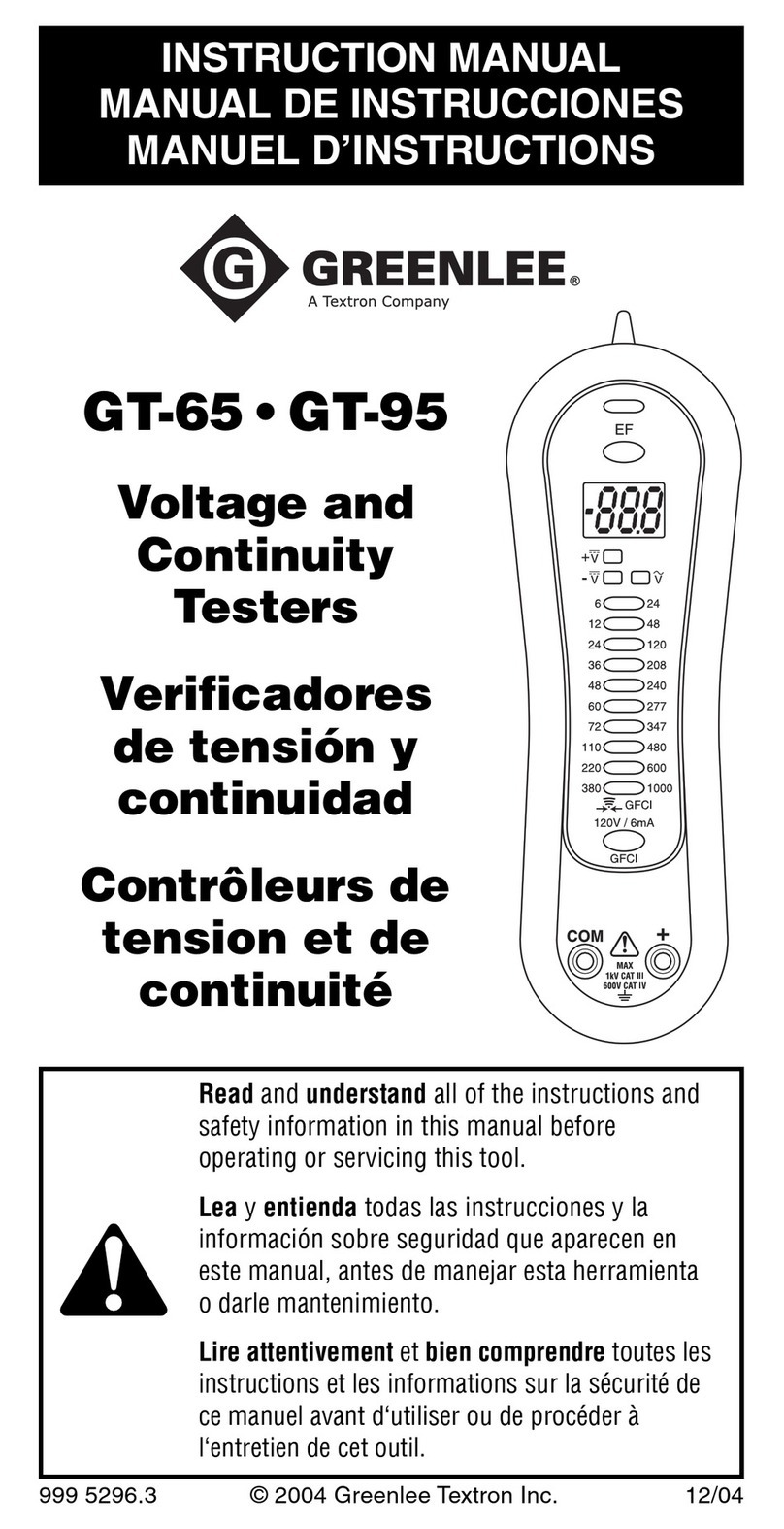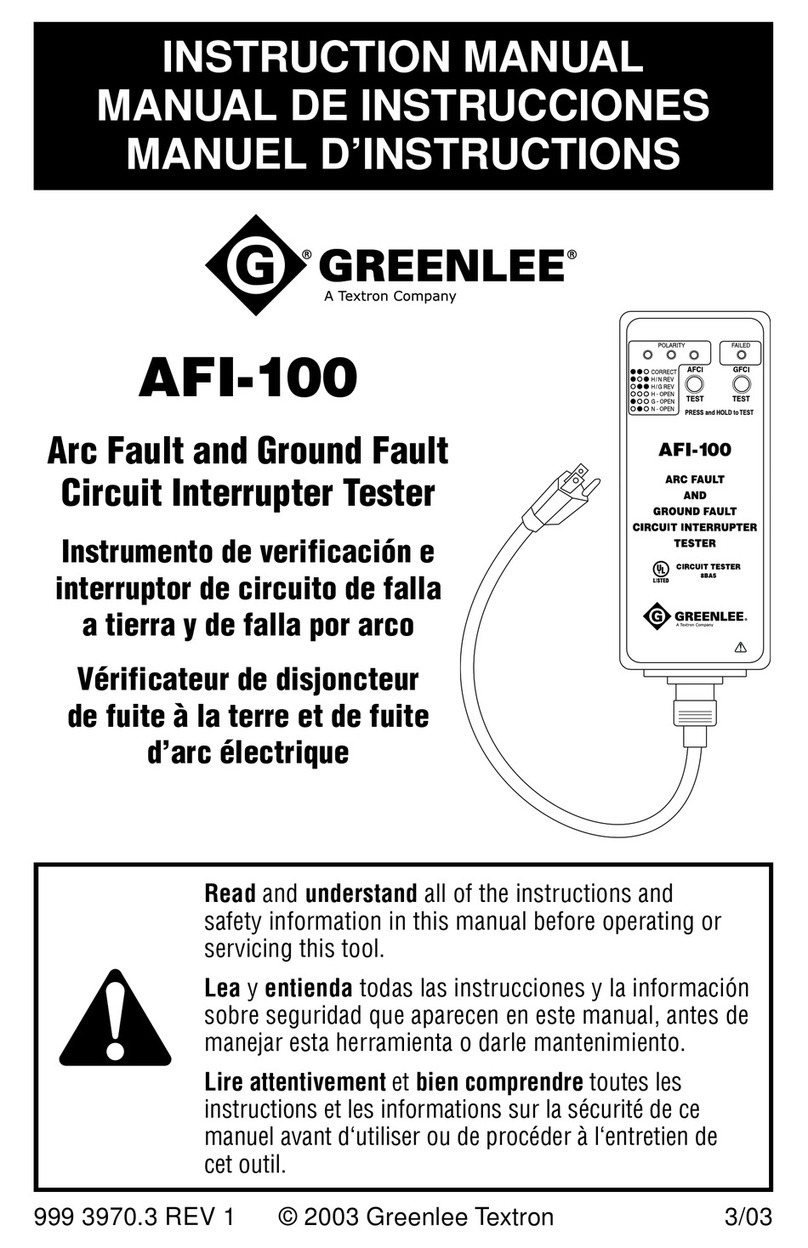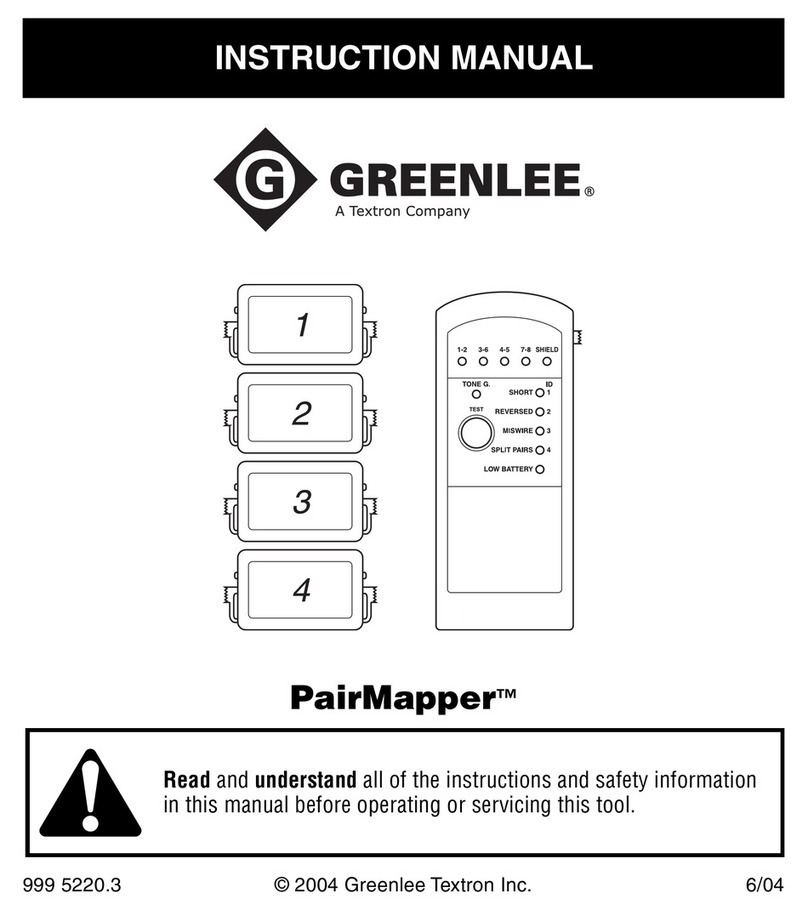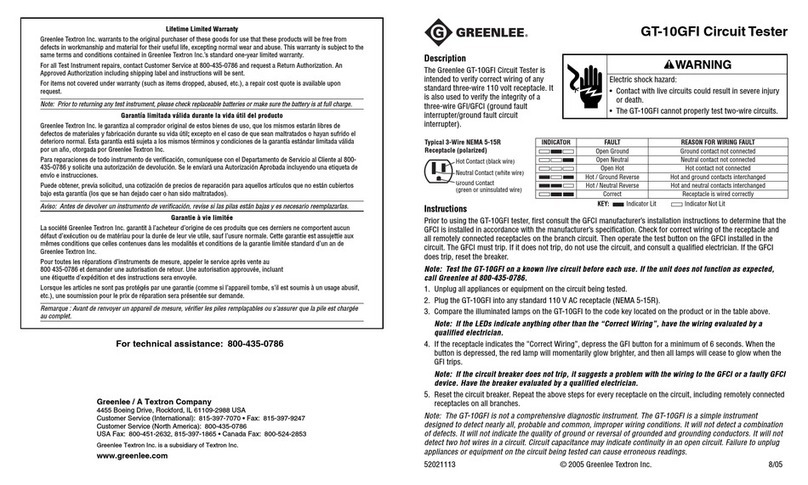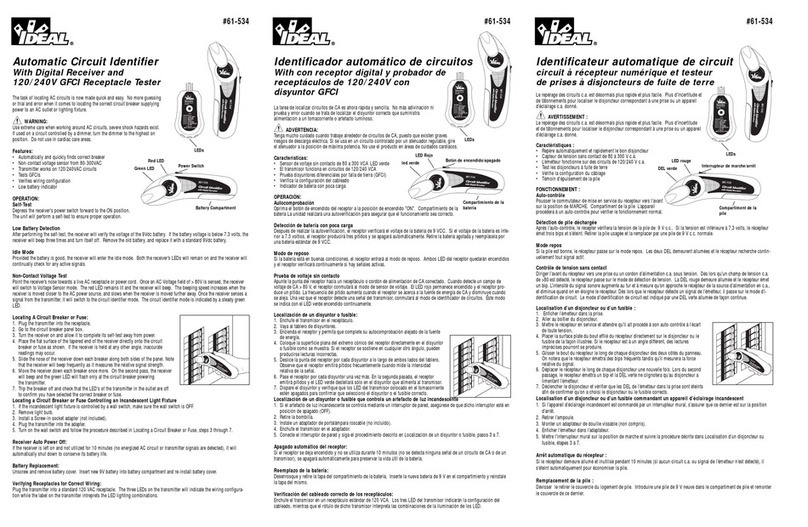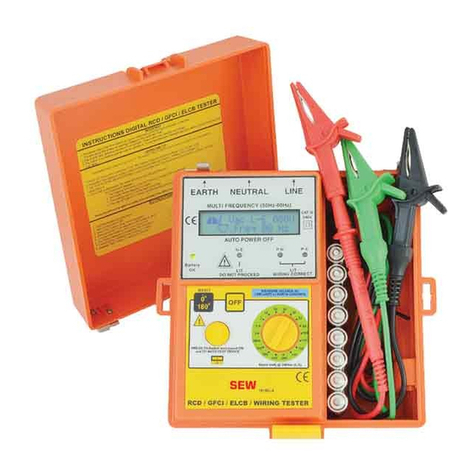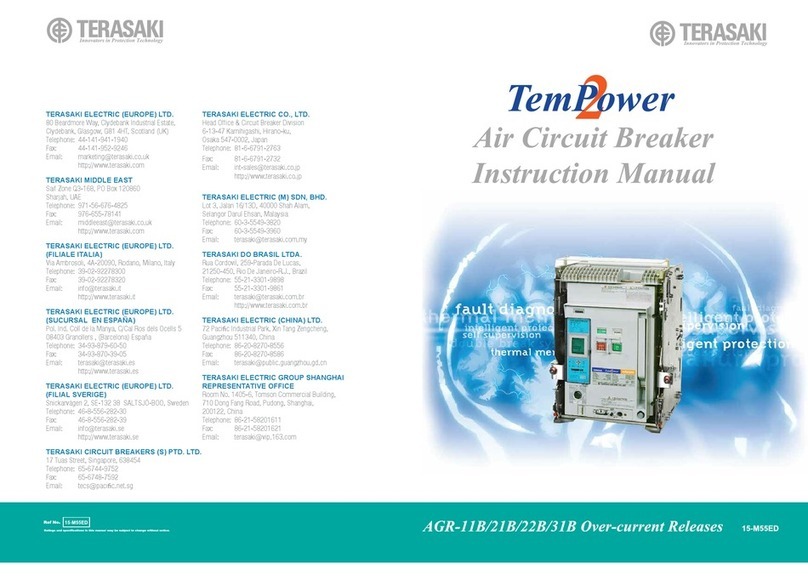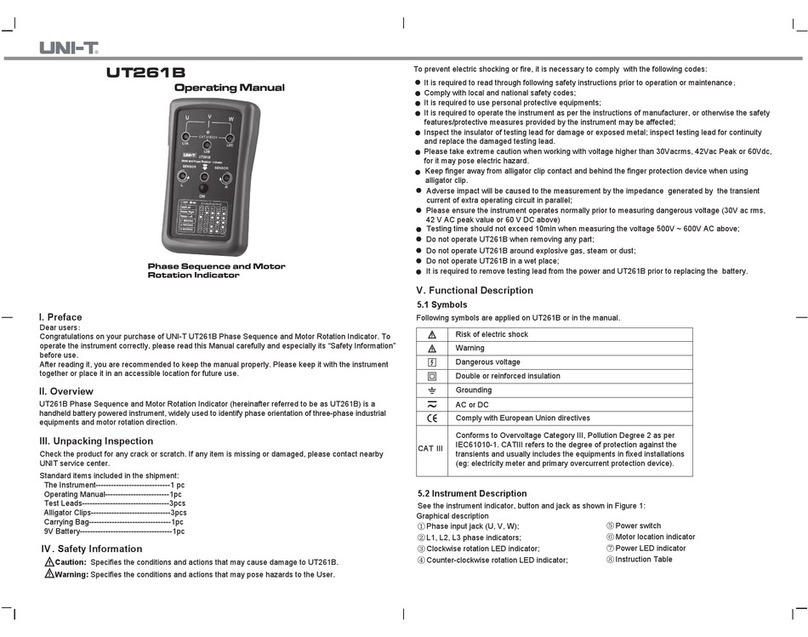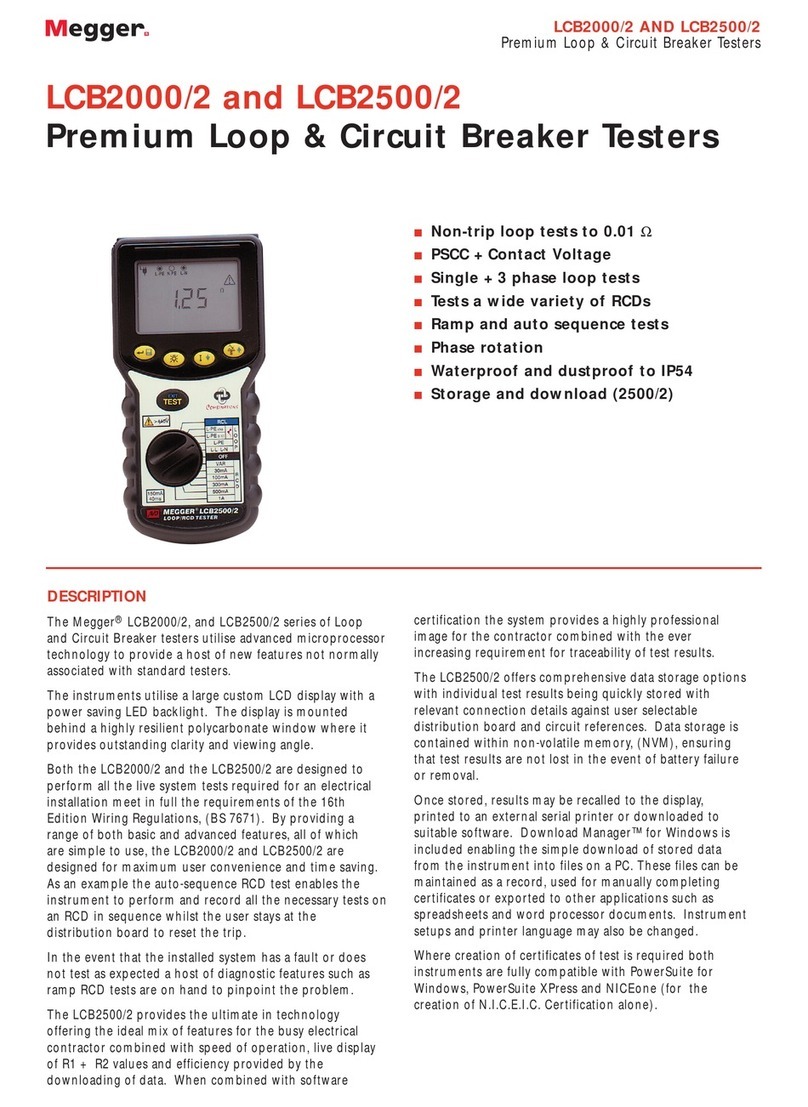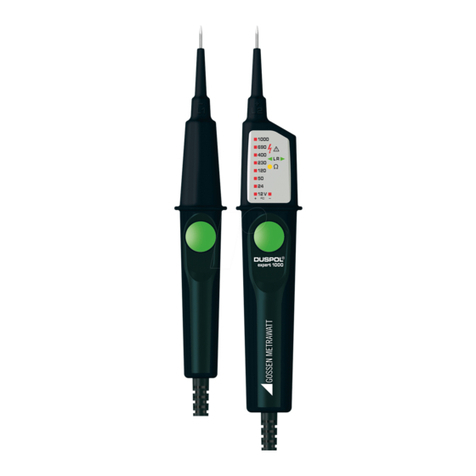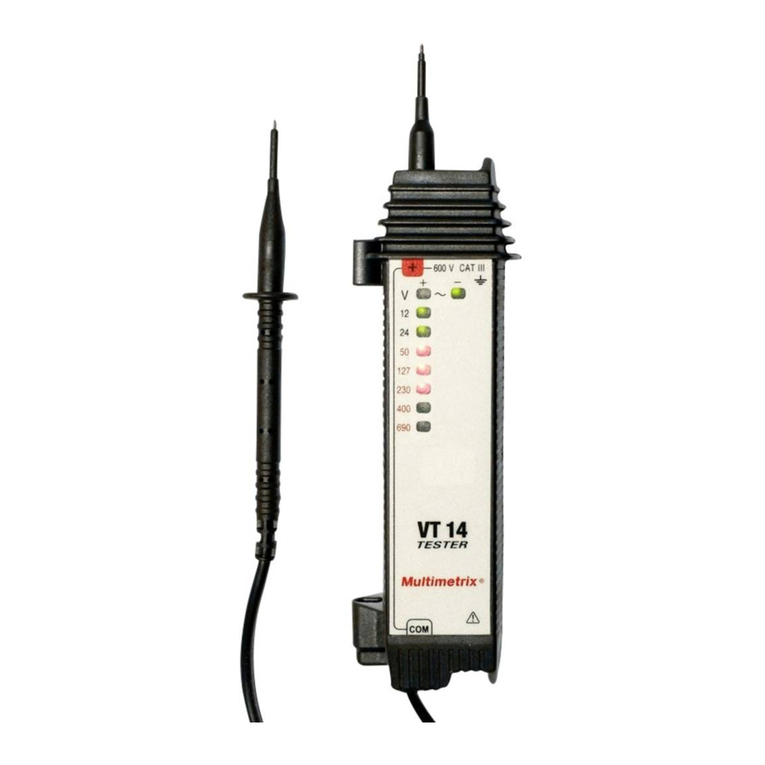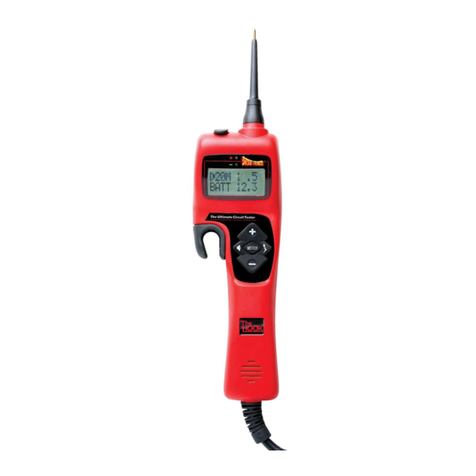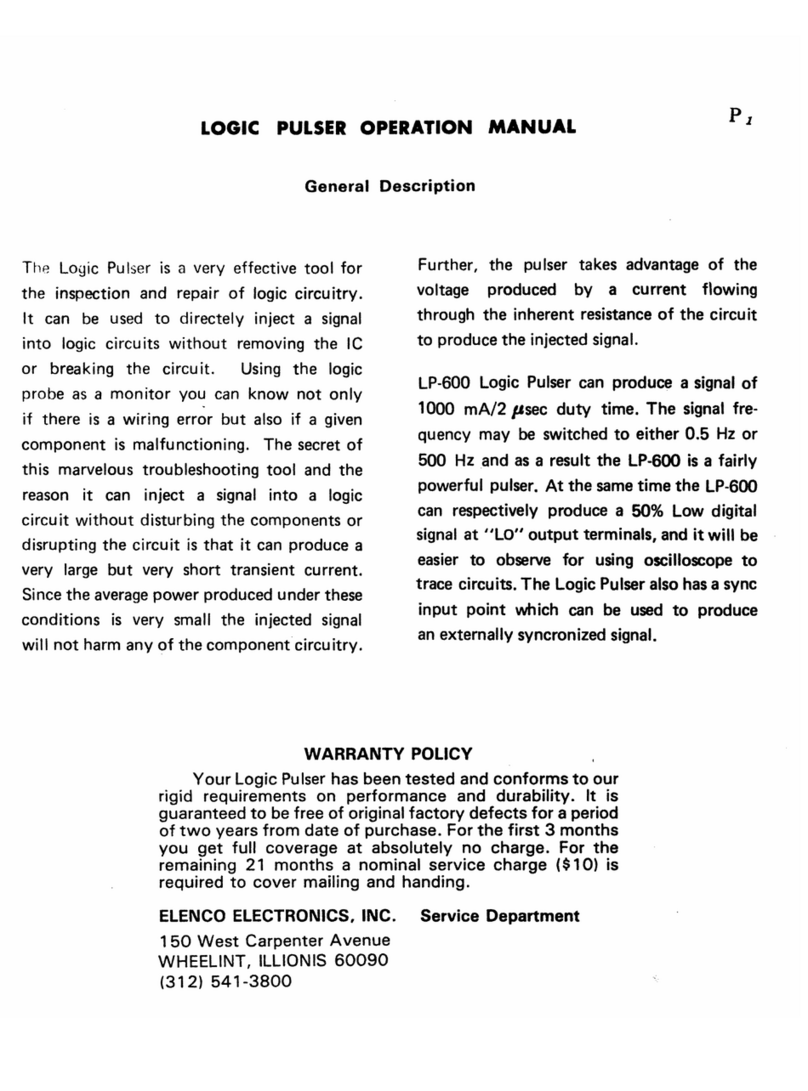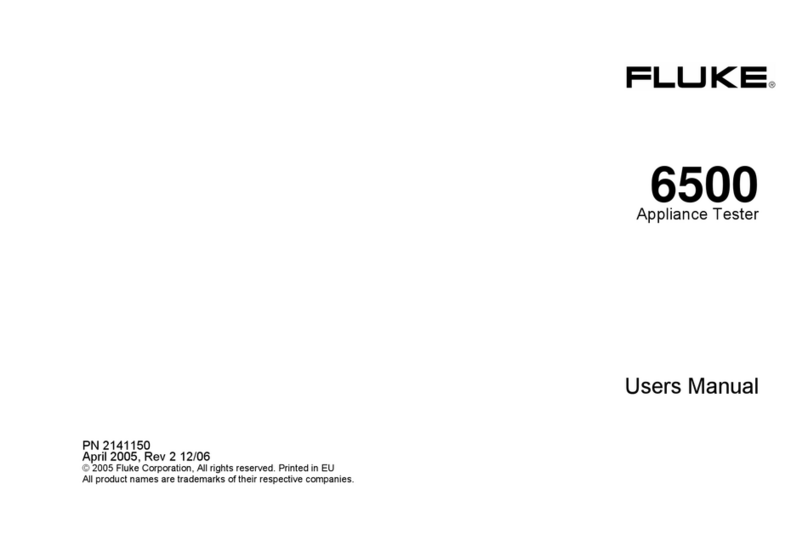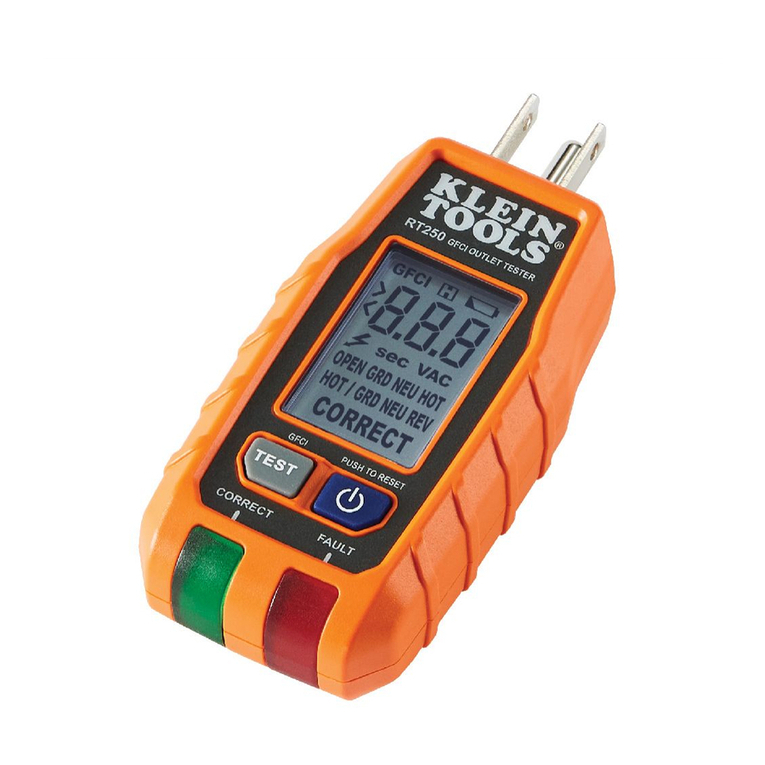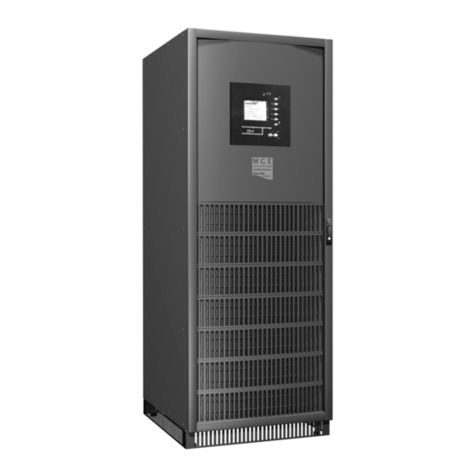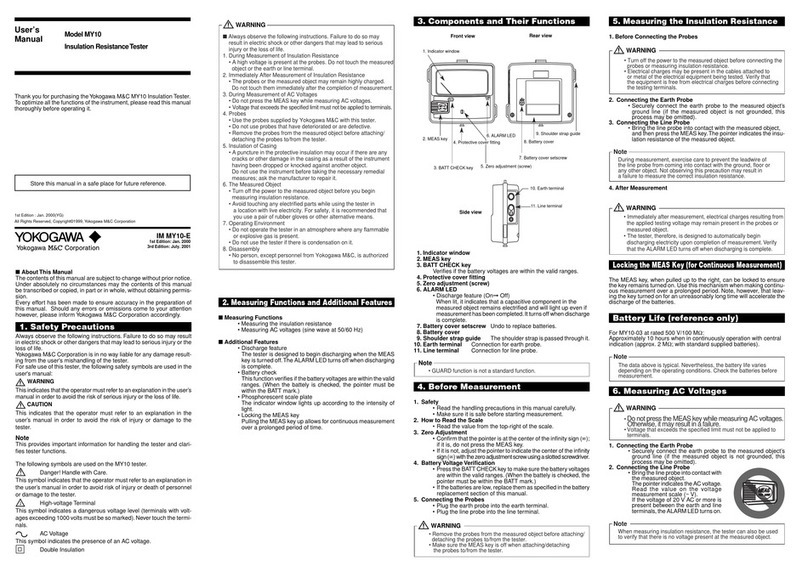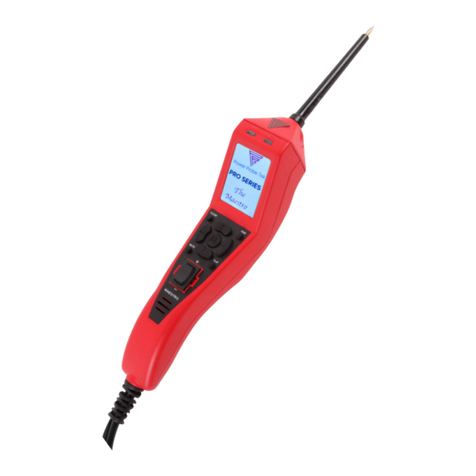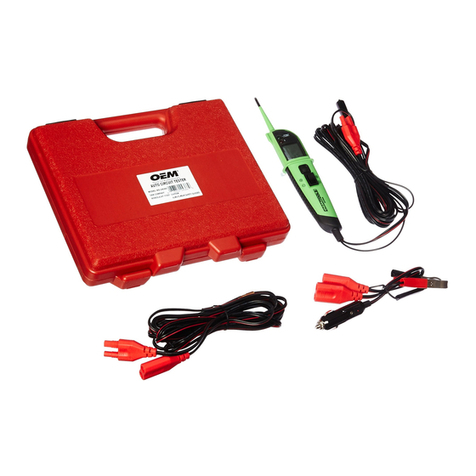
LT-100
7
Operation
1. See Typical Uses for illustrations.
2. Remove the probe tip cover.
3. Test the unit on a known functioning circuit or component.
• If the unit does not function as expected, replace the battery.
• If the unit still does not function as expected, send the unit to Greenlee for repair.
4. Take the reading from the unit to be tested, using the information provided under Lamp
Tests and Other Tests.
Lamp Tests
For all lamp tests, press the probe tip to the glass body or the lamp base. Press and hold the
Lamp Test button. Touching the base of the lamp during the test can cause incorrect test
results.
* If lamp illuminates with lamp tester but not when installed in an energized fixture, the
filaments or ballast may be defective. The filaments and ballast may be checked with the
continuity function.
** If only half of the lamp illuminates, touch the probe tip to the second pin. If the other half
does not illuminate, the lamp is defective.
*** Intermittent or unstable illumination while in the fixture may indicate a faulty ballast.
Lamp type Tube is defective if …
Fluorescent tube does not illuminate*
Low-pressure sodium inner tube does not illuminate**
High-pressure sodium illumination in inner tube is not a clean, blue line
Neon tube does not illuminate
Mercury*** tube does not illuminate evenly
Metal halide*** tube does not illuminate evenly
